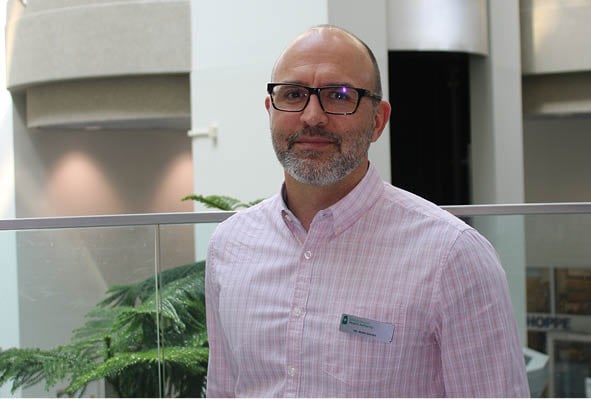Former Estevan resident Dr. Mark Wahba says that he is a small part in a large group of people who are dedicated to saving lives.
But thanks to his quick thinking recently while working in the emergency room of the Royal University Hospital in Saskatoon, he’s earning plenty of praise, as his actions likely saved lives.
Wahba, the son of Susan and Dr. Yosri Wahba, was working as an emergency room physician at the Royal University Hospital in Saskatoon Thursday night when he became concerned about a patient.
“The patient had a headache and some muscle pains and not really a lot else to find,” Wahba told the Mercury. “But what really was the clue was that the patient’s son had a headache as well. It’s pretty unusual for two people of different ages (in the same residence) to have a headache at the same time.”
Carbon monoxide (CO) poisoning was in the back of his mind as a possible cause, but it wasn’t the chief concern.
He ordered some investigations, and called the fire department to have them check the CO levels in the apartment building.
Members of the Saskatoon Fire Department responded to an apartment building, where 50 people were evacuated and 29 were sent to hospital due to a CO leak.
There were no fatalities.
The Saskatchewan Health Authority shared Wahba’s story Friday, leading to plenty of praise.
The accolades continued Monday, when Saskatoon Fire Chief Morgan Hackl presented Wahba with an Award of Merit in a virtual ceremony. Hackl said there was the potential for a large carbon monoxide incident.
“Dr. Wahba, you decided to directly call the Saskatoon Fire Department dispatch, due to a patient that you attended to in one of the emergency rooms here in the city. Was it intuition? Was it conscious thought? What you decided that day did save lives. In fact, you likely saved numerous people’s lives,” said Hackl.
The award was delivered to Wahba’s home.
“I’m humbled and I’m honoured to receive this Award of Merit from the Saskatoon Fire Department,” said Wahba.
He became emotional when he explained how the incident hit close to home. The apartment building is two blocks from his home, and his kids go to school with children who reside in that building.
“My son’s in class with one of the kids in that building,” said Wahba. “A close friend of mine, she lost her brother and sister 27 years ago to carbon monoxide poisoning.”
When the fire department sees 50 parts per million, they ask the residents to vacate and they work with SaskEnergy to find and remedy the problem. When they see 200 parts per million, they evacuate the building and send firefighters in with self-contained breathing apparatus.
When it is more than 400 parts per million, as it was in the boiler room in this instance, people can die in two or three hours. Other areas of the building were 350 parts per million on Thursday.
Hackl said Wahba’s thought process was critical, so in the spirit of community, it was important to recognize him. The Saskatoon fire chief also praised Wahba for being a “model for us in the community to take action, for all of us to be safe.”
Wahba said he’s stunned at the attention and the recognition he has received in recent weeks, describing himself as a small part of the bigger emergency services team with the fire department, paramedics, social workers, administrators, police and the STARS Air Ambulance, among others.
But he’s proud to be part of the team, and he’s glad that it is receiving so much attention for the issue of carbon monoxide poisoning.
“There’s a reason they call it the silent killer. It’s tasteless, it’s odorless. It’s non-irritating. It can affect anyone regardless of their socio-economic status and their previous health. It doesn’t discriminate.”
Wahba said he doesn’t tend to a lot of patients regarding CO poisoning. Since the event, a few people have told him they don’t have a CO detector in their home, and Wahba believes there should be at least one in each home.
He’s stunned that homes, apartment buildings and other buildings don’t need to have carbon monoxide detectors.
“I hope it changes after this event, because this event could have been so much worse.”



